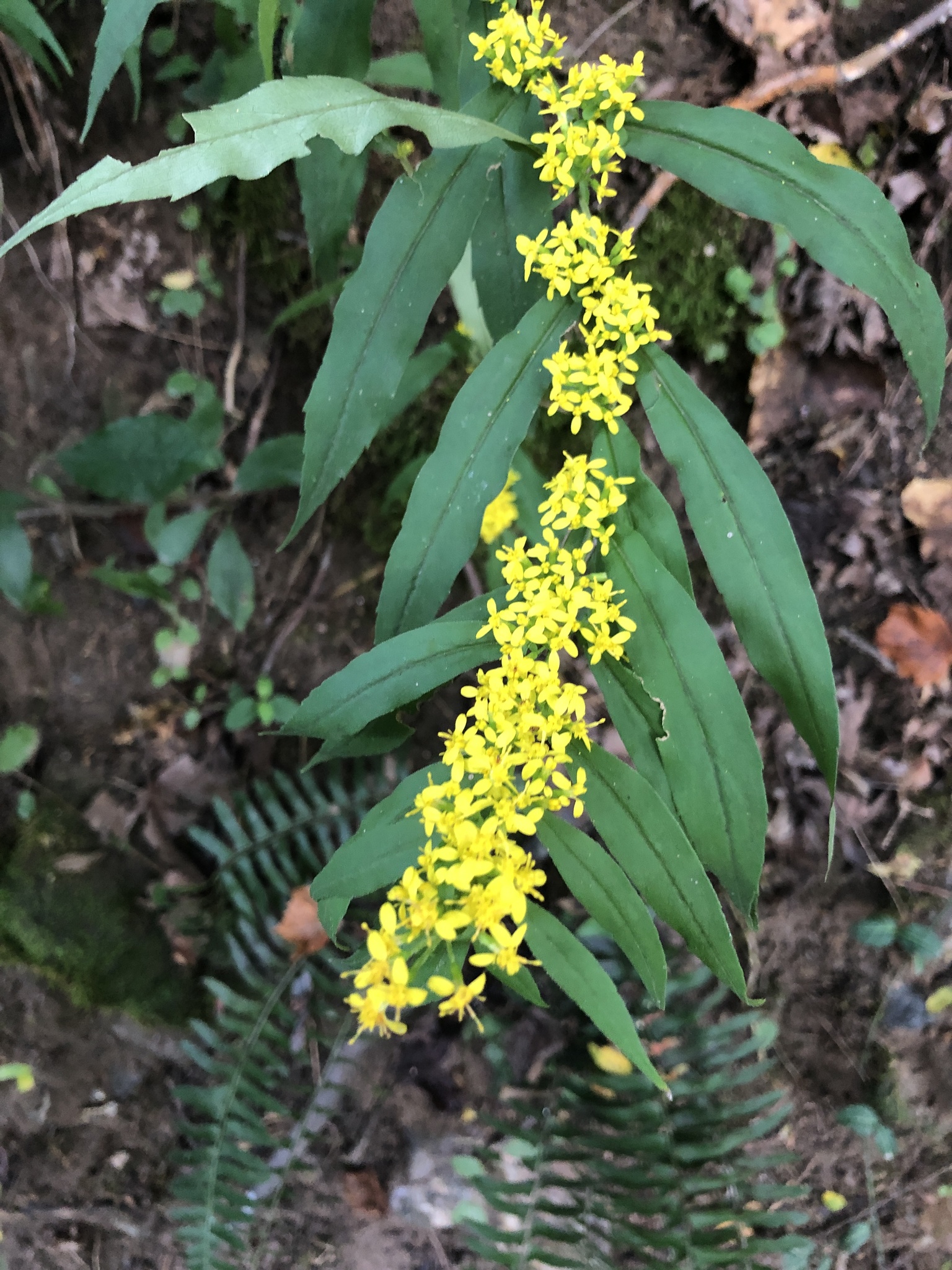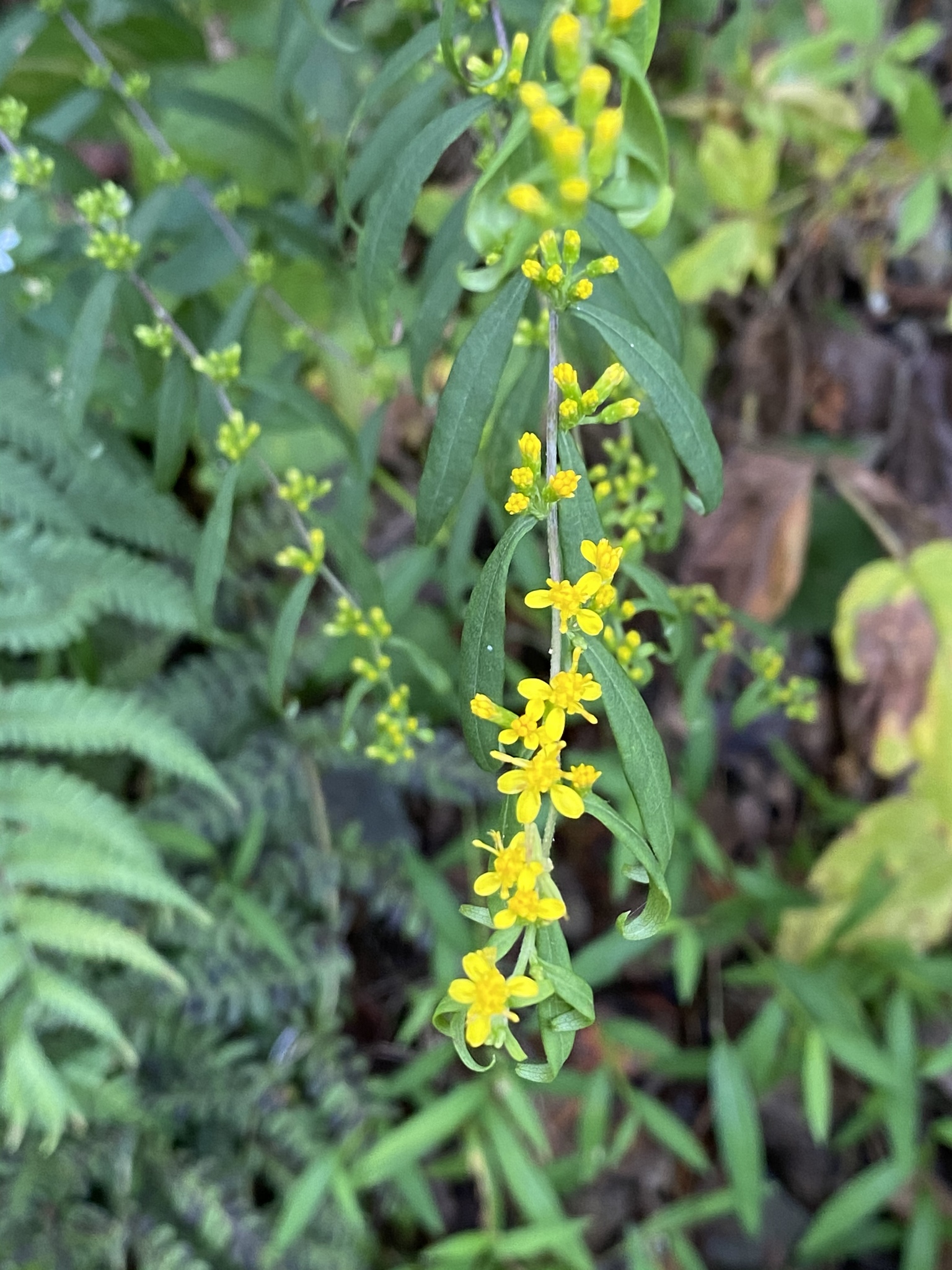Map Snapshot





















220 Records
Seasonality Snapshot
Use of media featured on Maryland Biodiversity Project is only permitted with express permission of the photographer.
Wreath Goldenrod in Allegany Co., Maryland (9/6/2017).
View Record Details
Media by
Mark Eanes.
Wreath Goldenrod blooming in Garrett Co., Maryland (8/22/2009).
View Record Details
Media by
Jim Brighton.
Wreath Goldenrod blooming in Garrett Co., Maryland (9/10/2013).
View Record Details
Media by
Jim Stasz.
Wreath Goldenrod in Baltimore Co., Maryland (10/6/2016).
View Record Details
Media by
Kirsten Johnson.
Wreath Goldenrod blooming in Baltimore Co., Maryland (9/10/1983).
View Record Details
Media by
Jim Stasz.
Wreath Goldenrod in Allegany Co., Maryland (5/13/2015).
View Record Details
Media by
Kimberly Booth.
Wreath Goldenrod in Montgomery Co., Maryland (9/17/2019).
View Record Details
Media by
Bill Hill.
Wreath Goldenrod in Washington Co., Maryland (10/1/2017).
View Record Details
Media by
Kirsten Johnson.
Wreath Goldenrod in Caroline Co., Maryland (9/12/2020). (c) tomfeild, some rights reserved (CC BY-NC).
View Record Details
Media by
Tom Feild.
Wreath Goldenrod in Prince George's Co., Maryland (10/3/2020). (c) dossification, some rights reserved (CC BY-NC).
View Record Details
Media by
dossification via iNaturalist.
Wreath Goldenrod in Allegany Co., Maryland (10/3/2020). (c) craigtheautotroph, some rights reserved (CC BY-NC).
View Record Details
Media by
craigtheautotroph via iNaturalist.
Wreath Goldenrod in Baltimore Co., Maryland (9/24/2019). (c) jaxxsoon, some rights reserved (CC BY-NC).
View Record Details
Media by
jaxxsoon via iNaturalist.
Wreath Goldenrod in Montgomery Co., Maryland (9/28/2020). (c) Terri Jacobsen, some rights reserved (CC BY-NC).
View Record Details
Media by
Terri Jacobsen via iNaturalist.
Wreath Goldenrod in Montgomery Co., Maryland (10/12/2020). (c) bugzilla, some rights reserved (CC BY-NC).
View Record Details
Media by
bugzilla via iNaturalist.
Wreath Goldenrod in Allegany Co., Maryland (9/6/2020). (c) Debbie, some rights reserved (CC BY-NC).
View Record Details
Media by
Debbie via iNaturalist.
Wreath Goldenrod in Montgomery Co., Maryland (9/28/2020). (c) jraiford, some rights reserved (CC BY-NC).
View Record Details
Media by
jraiford via iNaturalist.
Source: Wikipedia
| Solidago caesia | |
|---|---|

| |
| Scientific classification | |
| Kingdom: | Plantae |
| Clade: | Tracheophytes |
| Clade: | Angiosperms |
| Clade: | Eudicots |
| Clade: | Asterids |
| Order: | Asterales |
| Family: | Asteraceae |
| Genus: | Solidago |
| Species: | S. caesia
|
| Binomial name | |
| Solidago caesia | |
| Synonyms[1] | |
Solidago caesia, commonly named blue-stemmed goldenrod, wreath goldenrod,[2] or woodland goldenrod,[3] is a flowering plant native to North America.
Description
[edit]Key identification features include a dark, wiry, blue or purple stem, and flower heads in the leaf axils instead of in a large array at the top of the plant.[3] Prefers medium to part shade, and can often be found in wooded areas.[4]
Distribution
[edit]It grows in the central and eastern parts of the continent from Manitoba east to New Brunswick, south as far as Florida and eastern Texas.[5][6]
Galls
[edit]This species is host to the following insect induced galls:
- Asphondylia silva
- Asteromyia carbonifera (Osten Sacken, 1862)
- Gnorimoschema gallaeasterella (Kellicott, 1878)
References
[edit]- ^ "Solidago caesia L." World Flora Online Consortium. Retrieved 23 October 2020.
- ^ Missouri Botanical Garden Gardening Help, Solidago caesia
- ^ a b Flora of North America, Solidago caesia Linnaeus 1753. Blue-stem or woodland or wreath goldenrod , verge d’or bleuâtre
- ^ Hilty, John (2017). "Illinois Wildflowers Blue-Stemmed Goldenrod, Solidago caesia, Aster family (Asteraceae)". Illinois Wildflowers. Retrieved 22 September 2018.
- ^ United States Department of Agriculture Plants Profile
- ^ Biota of North America Program 2014 county distribution map
















